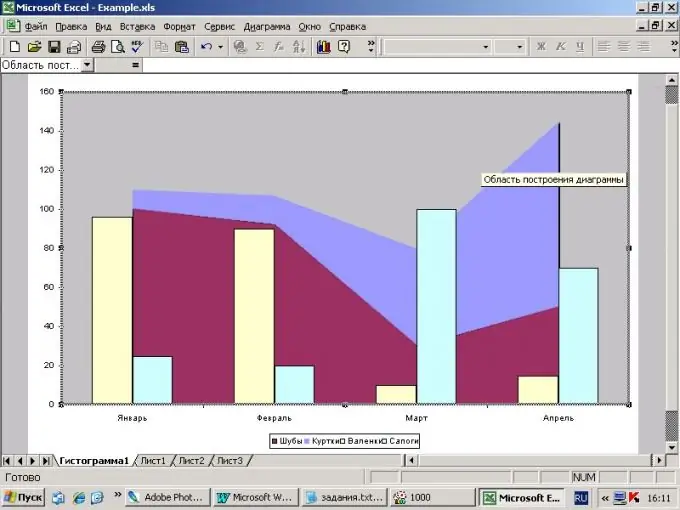A histogram is a graph that displays data in bars. The height of the columns depends on the amount of data, and the interval between them depends on the period of time during which this data was collected.

Instructions
Step 1
Create a table and enter the data on the basis of which you will build a histogram.
Step 2
Select a randomly selected cell from this table. In the "Insert" menu, select the "Chart" option or click on the "Chart Wizard" icon on the toolbar. To create a histogram with default settings, after selecting a cell, press F11. The histogram will be created on a separate sheet.
Step 3
Choose from the list the type "Histogram". In the "View" section, specify its subtype. The bottom window displays a hint-description to help you make your choice. Click on the Result button to see how the histogram will look based on your data. Click the Custom tab if you want to create a custom histogram - for example, in combination with a graph or with areas. To continue building, click "Next".
Step 4
In the next window, you must specify the data range for plotting the histogram. The entire table is used by default. Select those cells, the contents of which should be displayed in the histogram. In the "Range" field of the dialog box, enter the desired values. Using the "Rows in" switch, define which parameter will be indicated on the abscissa - columns or rows. Click Next to continue.
Step 5
In the "Chart Options" window, on the "Titles" tab, specify the name of your histogram and axes, if you see fit. Moving through the tabs, you can style the drawing in accordance with the work it is supposed to illustrate. The preview window displays all the changes that you make. Click Next to continue.
Step 6
In the last step, tell the Excel editor where you intend to place the histogram - embed it in the worksheet or place it on a separate sheet. Set the radio button to the desired value and click "Finish" to complete the work.






